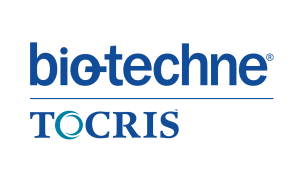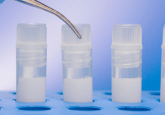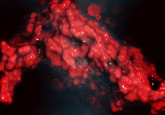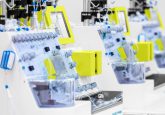Enhanced quality small molecules as ancillary materials: an interview with Rob Felix and Sarah Hillary
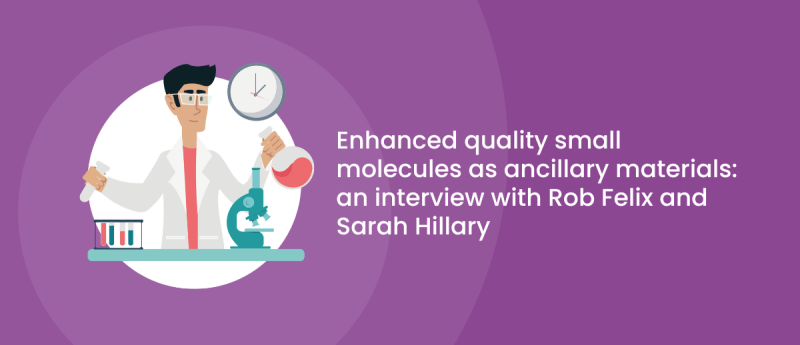
Are all small molecules the same? How do the small molecules used in cell culture differ from drugs or active pharmaceutical ingredients?
We spoke to Rob Felix and Sarah Hillary to get some insight into how small molecules are used to improve the effectiveness of reprogramming, cell expansion and differentiation and hear their expertise on the regulatory landscape for ancillary reagents in cell and gene therapy.
This interview is part of the RegMedNet In Focus on small molecules. Discover expert opinions on this topic by visiting our feature homepage.
Meet the interviewees

Robert Felix, Small Molecule Product Management Team Lead, Bio-Techne
Rob Felix leads the Product Management team for the Small Molecule Business Unit at Bio-Techne (MN, USA). Prior to joining the company, Rob worked at UCB Pharma (Slough, UK) after completing his PhD and post-doctoral research at Cambridge University (UK), where he worked with primary cell models. Rob is a key member of Bio-Techne’s global initiative to provide innovative solutions for cell and gene therapies from bench to bedside.

Sarah Hillary, Senior Manager for Quality and Compliance for Europe, the Middle East and Africa, Bio-Techne
Sarah Hillary is the Senior Manager for Quality and Compliance for Europe, the Middle East and Africa at Bio-Techne. Sarah has over 20 years of experience working in Quality in regulated environments such as the pharmaceutical and medical device industries. Sarah leads multiple teams which deliver quality assurance for Bio-Techne in Europe.
Questions
Rob: Small molecules are low molecular weight organic compounds, perhaps less than 1000 Daltons, and are generally of synthetic origin. They are also known as chemical compounds and often result from medicinal chemistry projects carried out to find new drugs. Typically, small molecules are used by cell biologists to inhibit or activate receptors, enzymes, or other targets and modify cellular signalling pathways to elicit a desired change in a cell’s characteristics or phenotype.
Sarah: Small molecules in this context could also be called reagents and may be considered as ancillary materials or raw materials in the production of cell therapies. Small molecules are made to high purity standards, typically >98% purity by high-performance liquid chromatography analysis. There are several other tests that manufacturers can perform to confirm the identity of the product.
Rob:
Reprogramming
Small molecules are used in regenerative medicine workflows to enhance the effectiveness of reprogramming, cell expansion and directed differentiation. Reprogramming of adult somatic cells such, as skin fibroblasts, can be enhanced by the application of small molecules. Usually, the small molecules will enhance the expression of one of the Yamanaka factors or replace the need for genetic manipulation.
Protocols also exist for chemically induced pluripotent cells (ciPSCs), i.e., generating iPSCs by only chemical means. However, these ciPSCs have not yet been used to generate therapeutically useful lineages. It is more common for cell therapy manufacturers to start with a validated stem cell line.
Expansion
Small molecules are commonly used to enhance the expansion and survival of cell lines prior to differentiation. Two commonly used compounds are Y-27632 (aka the ROCK inhibitor) and the GSK3b inhibitor, CHIR-99021, which is shortened to CHIR. These compounds are found is a variety of protocols for making cells such as midbrain dopaminergic neurones or precursor pancreatic beta cells ̶ cell types that are already in Phase 1 clinical trials. Therapeutic cell lineages are often derived through the application of growth factors and small molecules to direct differentiation. The cocktails of small molecules and proteins used have many common reagents but are often adjusted by cell therapy developers for their in-house protocols to optimise yields of the desired cell populations.
Gene editing
Small molecules have also been shown to be useful in gene editing, either through enhancing gene editing techniques such as CRISPR-Cas9 or through enhancing the transduction of genetic cargo through lentiviruses or AAV vectors. Other cocktails of small molecules (e.g., CEPT) can be used to support the survival of single-cell clones in conjunction with platforms such as the Namocell Pala.
Sarah: As small molecules move away from research applications, i.e., being used as primarily tool compounds, towards being cell culture additives and essential raw materials, cell therapy developers must work alongside chemical manufacturers who have the quality systems in place to ensure that these reagents can be made in a reliable, consistent and traceable manner.
Rob: Good question! Yes and no. I’ll answer the ‘no’ part! There is a huge diversity of chemical structures for these reagents, and the synthetic route for making small molecules can be long and complex. This might mean 15 synthetic steps for complex small molecules, which would take months to complete. Simpler compounds can be made in just one or two steps, and if the right building blocks are available, this would be a relatively straightforward synthesis for a skilled chemist. Hence, the cost of manufacturing a synthetic small molecule can vary widely.
Even small molecules that target the same cellular protein don’t necessarily have to have the same structure. Medicinal chemists sometimes talk about pharmacophores – molecular features that allow compounds to bind to certain amino acids in a protein, for example. While small molecules can share common features to conform to the pharmacophore, the individual atoms in the compounds can be different or in a different order. So, compounds that bind to the same target may have different pharmacologic and physiochemical properties (e.g., solubility). This means that there can be a lot of trial and error (i.e., compound screening) to find the right compounds to produce the phenotype you need.
Sarah: In theory, and in a very broad sense, yes, if you are talking about one small molecule with a known reference structure but from different sources. Unlike for say, proteins, which are typically made in biological systems, it is possible to specify the chemical structure, physical properties and remaining impurities of a typical small molecule within very tight parameters. However, in real-world practice, it really depends on how diligently manufacturers perform their quality control (QC). Ideally, each batch of a product will be subjected to a battery of tests, and procedures will be in place to reject batches that don’t conform. At Bio-Techne, we take QC testing very seriously for our small molecules.
Sarah: Small molecules used in cell culture often serve as reagents or supplements to support the growth, expansion, and differentiation of cells in the ex vivo manufacture of stem cell-derived therapies. However, they are not typically intended for therapeutic purposes.
In contrast, active pharmaceutical ingredients (APIs) undergo rigorous development, testing, and regulatory approvals to ensure their safety, efficacy, and quality for clinical use in drug products. Prior to human application, active pharmaceutical ingredients are formulated into drug products to ensure the proper dosage can be achieved through the intended dosing route.
Small molecules in powder form are dissolved in an appropriate solvent (e.g., water or DMSO) before being diluted into an aqueous cell culture medium and when used in ex vivo cell therapy processing are generally employed at lower concentrations. The small molecules are removed through washing of the final cell product. Of course, there is a need for these ancillary reagents to be of the highest quality grade possible to ensure traceability.
Rob: In addition to thousands of research-grade small molecules, Bio-Techne offers both GMP and Ancillary Material (AM) Grade products for use in ex vivo processing of cell therapies. We’ve enhanced the quality of these products by, amongst other things, adding additional QC testing and using a segregated manufacturing area. The production is certified animal free, i.e., Transmissible Spongiform Encephalopathy (TSE) and Bovine Spongiform Encephalopathy (BSE) free status is certified and the products are subjected to bioburden and endotoxin testing. Where GMP is not available, Bio-Techne’s AM-Grade small molecules offer a cost-effective and time-efficient way to access the highest quality reagents for cell therapy manufacturing.
Sarah: The landscape for regulatory compliance for ancillary materials in cell and gene therapy applications is evolving. Recently, we’ve seen the introduction of the new ISO (International Organization for Standardization) standard ISO20399:2022, which specifically speaks to the consistency and quality of ancillary materials. Bio-Techne’s AM-grade products follow this new ISO standard as appropriate.
The best way that cell therapy manufacturers can ensure regulatory compliance is to use the highest quality reagents on the market. To ascertain this, it will be necessary to engage in dialogue with chemical manufacturers and ask them to complete quality questionnaires. Ultimately, this may lead the manufacturers to conduct audits of their reagent suppliers, particularly for critical reagents. At Bio-Techne, we are quite used to working with customers and welcome the opportunity to engage in their quality audits.
Rob: Of course, small molecules are subject to the same regulations as other chemicals so REACH (Registration, Evaluation, Authorisation and Restriction of Chemicals) regulations may be applicable and in some cases, products may fall under controlled drug substance legislation. At Bio-Techne, we take our responsibility for checking the status of our products under applicable legislation extremely seriously. The ability to import or export small molecules into the territories we serve requires constant vigilance and we have several systems in place to ensure adherence to the regulations in this regard.
In addition, we are one of the few companies in the life science chemical market that proactively seeks licenses for patented compounds. By obtaining licenses where necessary, we help to ensure the continuity of supply. That said, many of the small molecules used in regenerative medicine cell therapies are well-established small molecules that are no longer covered by composition of matter patents.
Rob: There are new modalities for small molecules that have been taking the world of chemical biology by storm over the last five years, including PROTACs and Molecular Glues. These new types of compounds don’t inhibit their molecular targets but rather degrade the protein of interest in situ. Use of this type of small molecule degrader in cell and gene therapy applications could be an interesting line of research, offering the ability to fine tune the control of pathways with ‘hard-to-drug’ downstream regulator proteins, such as transcription factors. Equally, caged or photo-switchable reagents might offer greater levels of temporal control of the signalling pathways of cells in culture. These chemical biology techniques might allow for the fine tuning of the pluripotency of iPSCs or the exploration of new differentiation protocols.
As culture applications move into 3D with organoids, small molecules with greater cell permeability and longer-term stability in cell culture will be more important. Indeed, it may be become essential to develop enhanced delivery systems for small molecules, such as nanocarriers, which can penetrate organs grown in a culture dish.
Sarah: In reality, the regenerative medicine field is likely to follow the same trajectory as we’ve seen for immuno-oncology therapies. That is to say, the extensive use of more GMP reagents throughout the workflow. Increasing automation and the ability to scale up therapies in a cost-effective but safe manner will be a critical hurdle for manufacturers to overcome. At Bio-Techne, we are committed to working with customers to overcome the hurdles they face to secure a reliable and consistent supply of the highest quality reagents available.
Disclaimer
The opinions expressed in this interview are those of the interviewee and do not necessarily reflect the views of RegMedNet or Future Science Group.
In association with
